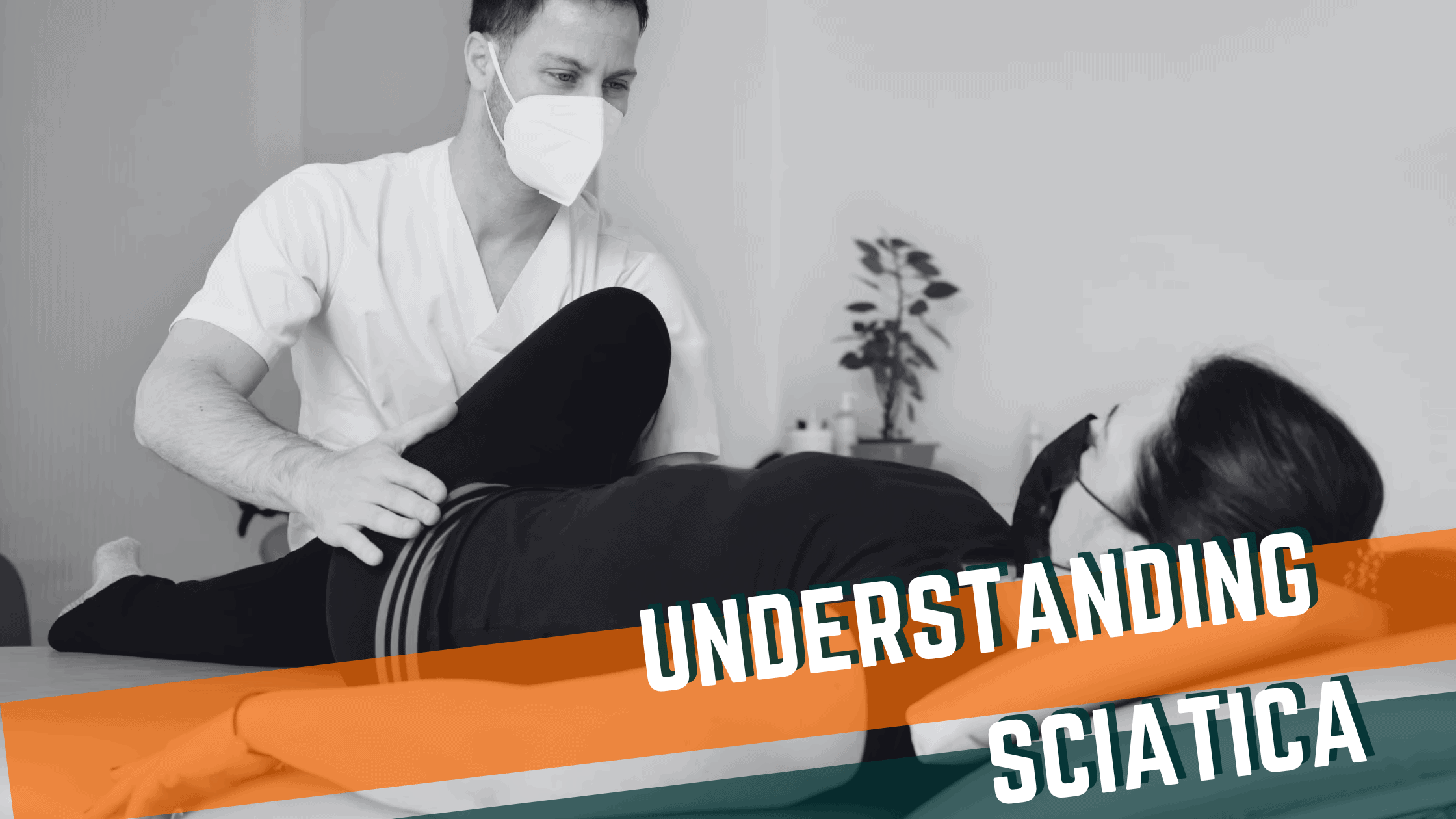
What is the Sciatic Nerve?
The Sciatic nerve is a thick flat band (approx. 2cm wide), originating from the spinal nerve roots branching off the lowest part of the spinal cord. The nerve tracks down your hip and buttock, extending down the leg just past the knee joint. This nerve controls the muscles in the back of the knee and lower leg, along with some sensation to the back of the leg and into the foot.
What is Sciatica/Sciatic Nerve Pain?
Everyone has heard either a friend, relative, or coworker mention “their sciatica was acting up.” A common misconception is equating sciatic pain strictly to low back pain or something always compressing the nerve itself. Sciatica can refer to pain, weakness, or numbness/tingling in the leg caused by direct injury to the nerve or inflammation in adjacent structures. For example, gluteal strains can cause local inflammation which irritates the nerve, although it’s not directly damaged at all.
With sciatic pain, some sharpness often occurs only on one side, regularly accompanied by some changes in neurologic symptoms. These symptoms can have a wide variance from dull aches to debilitating burning sensations. Pain and weakness may start slowly but can progressively get worse if the root cause is not appropriately addressed.
What are the causes of sciatica?
Sciatic pain (or sciatica) can occur for several different reasons ranging from occupational demands to acute injuries. Some specific issues include:
- Herniated discs
- Stenosis
- Previous injuries such as pelvic dysfunction or fractures
- Spondylolisthesis (slippage of vertebral body)
- Tumors
- Guarding from muscle spasms or prolonged positioning
- Poor lifting mechanics or inefficient movement
How is it diagnosed?
Your Physical Therapist can clinically test via sensory exams, movement assessments, nerve tension testing, and other provocation tests. These tests in conjunction with some diagnostic imaging such as X-ray or MRI can provide a clear depiction as to what is irritating the Sciatic nerve structure.
There can be several different mechanisms as to why your Sciatic nerve is irritated. Clinical expertise from a physical therapist can be a wonderful resource to help identify or tease out these possibilities.
Who experiences this frequently?
This issue typically happens most in the men ranging from age 30 – 50 but can affect a wide variety of individuals. It rarely occurs before the age of 20, unless the injury is secondary to trauma or significant dysfunction. Certain occupations like machine operators, truck drivers, and other sedentary jobs may be more prone to deal with sciatic nerve pain.
Treatment to Address Sciatic Nerve Pain
How do you manage this issue?
So, your symptoms start sounding a lot like sciatica, what now?
Ultimately, inflammation of the nerve or surrounding areas needs to be addressed. Measures should include:
- Anti-inflammatories (NSAIDs)
- Ice
- Light stretching to alleviate muscular tightness
- Generalized, multi-joint movement (ex. Going on a walk)
Additionally, physical therapy has been shown to help with addressing this dysfunction both directly and indirectly. Depending on what is found in the physical therapy assessment, the treatment plan we design will be unique to your specific issues.
Various hands-on techniques, like dry needling, myofascial decompression, joint manipulation, and soft tissue massage, that we will choose from can relieve your symptoms and improve your mobility within each session. Manual therapy coupled with a great exercise regimen can be a wonderful solution in getting control of this type of issue as well.
Does the pain ever subside?
Return to function and reduction of pain often varies based on the onset and severity. Very often, symptoms resolve over the course of 4-6 weeks, but addressing it as soon as possible can improve your outcome.
Check out this previous blog post for “Sciatica Stretches” which covers some stretches that can be a great starting point for relief.
Don’t let sciatica run your day-to-day…
The Onward team is ready to guide you not only to eliminate your symptoms but make sure you remain resilient & get back to the life you want!
Recent Articles
Why Early Intervention Physical Therapy Accelerates Your Recovery

What to Expect at Your First Physical Therapy Session?

How to Choose a Physical Therapist

The Top 5 Misconceptions About Physical Therapy

The Complete Guide to Physical Therapy

